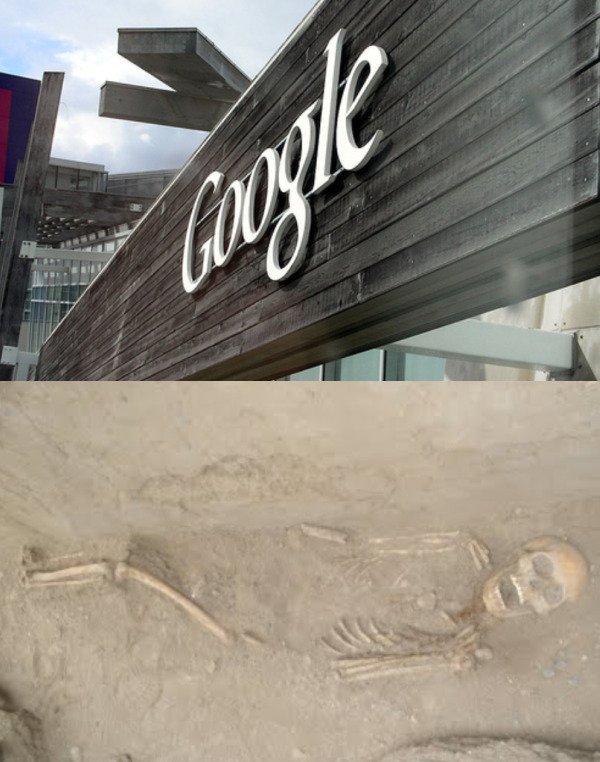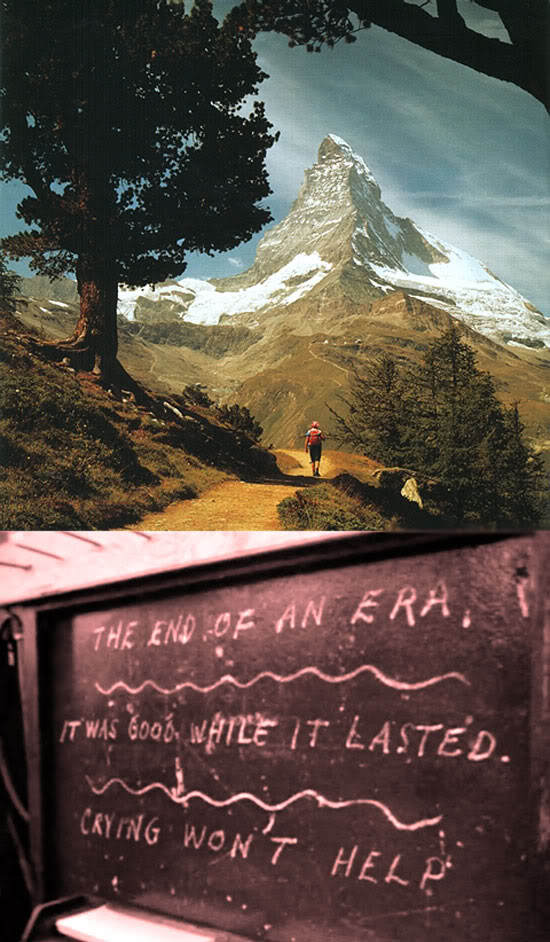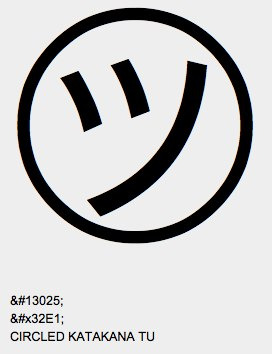February 2010 Archives
The letters were among thousands of documents stolen by Guglielmo Libri, an Italian count and mathematician who served as secretary of the Committee for the General Catalog of Manuscripts in French Public Libraries in the 1840s. After learning that he might be arrested, Libri fled to London in 1848 with a collection of 30,000 books and manuscripts, including those by Descartes, Galileo, Fermat, Leibniz, Copernicus and Kepler and other scientific and mathematical giants.
Claiming to be a political refugee, Libri was welcomed in Britain even though French courts eventually convicted him in absentia in 1850 and sentenced him to 10 years in prison. Libri raised money by selling his collection, and put a total of 7,628 lots up for sale at two auctions in 1861.
Vid sidan av en kundorienterad och en medborgarorienterad biblioteksideologi, funderar jag på om det inte även går att tänka sig en objektsorienterad. Enligt denna existerar biblioteken primärt för böckernas skull (vilket förvisso inte utesluter sekundära syften). Detta kan låta lite magstarkt, men är ändå värt att fundera på.Jag gissar att det är i linje med hela den här spekulativa realismen och "objektorienterad x"-trenden som pågår, som jag inte har nån aning om vad den går ut på. Anyways så tänker jag att Book Cell är ett objektorienterat bibliotek i köttet:

 En fascinerande historia om vad som hände när driftiga matematiker ville ta Alexandre Grothendiecks svåråtkomliga och banbrytande verk Seminaire de Geometrie Algebrique till nätet genom lite good ol' crowdsourcing:
En fascinerande historia om vad som hände när driftiga matematiker ville ta Alexandre Grothendiecks svåråtkomliga och banbrytande verk Seminaire de Geometrie Algebrique till nätet genom lite good ol' crowdsourcing:Enter Bas Edixhoven, a Dutch mathematics professor who conceived the rather marvelous idea of organizing teams of volunteers to re-type all of SGA using modern typesetting software, correcting typos and inserting references to more recent literature where appropriate. Edixhoven secured the blessings of all of Grothendieck's collaborators, but was unable to contact the great man himself, who has spent most of the past two decades in complete seclusion in an unknown location.Men när det ensliga, och 82-åriga, geniet fick nys om tilltaget hörde han av sig och vädjade till organisatörernas "skamkänsla" att inte publicera hans verk (läs brevet). Steve Landsburg skriver om varför:
But in the many years since Grothendieck retired from mathematics and withdrew from society, he has periodically (though not for several years now) released long, eccentric and beautiful manuscripts containing thousands of pages of mathematics, autobigraphy, philosophy and theology, and these give some clues. (...)Fasinerande, alltihopa.
The thrust of his objection--and I am a little hesitant to summarize the subtleties of his position in a single phrase, but here goes--is that everyone's picking the fruit and nobody's tending the garden. Nobody, that is, is doing the sort of deep foundational work that marked Grothendieck's own career. That ongoing disappointment, presumably, has something to do with the letter that arrived last month.
Forskarna har tagit hjälp av professor Göran Possnert vid Ångströmlaboratoriet i Uppsala för att med en så kallad kol 14-analys av proverna ta reda på när kvinnorna dog.Björn Brembs berättar lite om det noggranna granskningsarbetet av artikeln, och jag fastnade för den här detaljen om "reservoar-effekten":
- Enligt denna datering levde den äldre kvinnan redan på 1200-talet innan vare sig Birgitta eller Katarina var född, och den yngre minst 200 år senare, berättar Göran Possnert.
En del av analyserna har gjorts i samarbete med en forskare vid den amerikanska federala polisen FBI:s rättsgenetiska laboratorium i Virginia, USA.
The review-process was a lot more bumpy and time-consuming. The reviewers all liked the way she had handled and analyzed the DNA and only had minor suggestions for improvement in this respect. The radiocarbon dating itself was also ok, but two of the reviewers brought up the "reservoir effect". This could lead to a deviation in radiocarbon dating from the correct age if the two people had been on a high-seafood diet.Studien visar att de två personerna förmodligen åt en hel del fisk, men inget som påverkade slutresultatet.
Artikeln kan man läsa själv hos PLoS ONE: "Analysis of the Putative Remains of a European Patron Saint-St. Birgitta".
 I en matematik-arkeologisk utgrävning av grunderna till Googleplex, utförd av forskare vid universitetet i Udine (Italien), har förhistoriska rester av PageRank-algoritmen påfunnits: redan på 1940-talet analyserade ekonomen (och Nobel-pristagaren 1973) Wassily Leontief "input" och "output" i olika sektorer och hur man med hjälp av en iterativ metod (à la PageRank) kan avgöra värdet för varje sektor baserat på vikten hos de andra sektorer som förser dem med resurser.
I en matematik-arkeologisk utgrävning av grunderna till Googleplex, utförd av forskare vid universitetet i Udine (Italien), har förhistoriska rester av PageRank-algoritmen påfunnits: redan på 1940-talet analyserade ekonomen (och Nobel-pristagaren 1973) Wassily Leontief "input" och "output" i olika sektorer och hur man med hjälp av en iterativ metod (à la PageRank) kan avgöra värdet för varje sektor baserat på vikten hos de andra sektorer som förser dem med resurser. Med hjälp av kol 14-metoden har utgrävningen också lyckats datera senare rester i form av Kleinbergs HITS, Pinski & Narins bibliometriska metod för att ranka vetenskapliga tidskrifter, och Hubbells metod för att avgöra social status i sociala nätverk på 1960-talet. Tidigare grävningar har lokaliserat Eugene Garfields analys av citeringskedjor och Massimo Marchioris HyperSearch.
Referens: Massimo Franceschet, "PageRank: Stand on the shoulders of giants", arXiv:1002.2858v1. (via: arXiv blog, som vanligt)
 Jag vill bara peka på The Bold Italic, en slags lokal guide till San Francisco, men titta så fint varje artikel är formgiven: Mess Transit, Grizzly Man, Shred of Evidence, Tunnel Vision, Members Only, Going to Pot. Apropå ett tidigare inlägg om "Måttbeställd design".
Jag vill bara peka på The Bold Italic, en slags lokal guide till San Francisco, men titta så fint varje artikel är formgiven: Mess Transit, Grizzly Man, Shred of Evidence, Tunnel Vision, Members Only, Going to Pot. Apropå ett tidigare inlägg om "Måttbeställd design". Among our 3 million members, we are happy to have 114,031 Iranian members who have added 714,626 books to their shelves. [...][via: The Guardian]
Last Friday, February 5, 2010, we were saddened to see Goodreads traffic in Iran plummet (screenshot at left), which can only mean that Goodreads has joined the ranks of sites blocked by Iranian President Mahmoud Ahmadinejad's regime.
In a letter written after his patient's death, Descartes's doctor, Van Wullen, described having found something wrong - which Ebert believes to be blood - in the philosopher's urine. "That is not a symptom of pneumonia; it is a symptom of poisoning, chiefly of arsenic," said Ebert, adding that Descartes asked his doctor to prescribe an emetic. "What conclusion is to be drawn other than the philosopher, who was well-acquainted with the medicine of his day, believed he had been poisoned?"
Intervju, på tyska, med Ebert.
 Två stycken favoritbloggar har packat ihop: Momus/Nick Curries Click Opera och mina kära kollegors Biblioteksrelaterat.
Två stycken favoritbloggar har packat ihop: Momus/Nick Curries Click Opera och mina kära kollegors Biblioteksrelaterat. He approaches literature almost as if it were a branch of science, governed by laws that are quantifiable and predictable, as when he talks of devising an algorithm, later discarded, to determine an optimum chapter order for his novel or when he compares writing to the annealing of metals.
 Ett nytt bibliotek i franska Fougères har en del fina detaljer (bl.a. en typografisk fasad, i stil med ett tidigare exempel) - den här läspodden för tankarna till hyddorna i Where The Wild Things Are!
Ett nytt bibliotek i franska Fougères har en del fina detaljer (bl.a. en typografisk fasad, i stil med ett tidigare exempel) - den här läspodden för tankarna till hyddorna i Where The Wild Things Are! Results generally suggest that pain sensitivity is related to cortical thickness in pain-related brain regions and that the lower sensitivity observed in meditators may be the product of alterations to brain morphometry from long-term practice.* Grant, JA, et al, "Cortical thickness and pain sensitivity in zen meditators", Emotion. 2010 Feb;10(1):43-53.

Det är den här sortens tweets man vill se: som väcker liv i neuronerna och får dom att unisont utbrista i ett "Huh?".
Frank Drake är astronomen bakom Drake-ekvationen, med vilken man kan räkna ut antalet civilisationer i vår galax som vi skulle kunna kommunicera med. Den ser ut så här (enligt Wikipedia):
But there's a problem: this is not an equation. To form a true Drake-like argument, Gleiser would need to assign probabilities to each of these sets allowing him to write an equation in which the assigned probabilities multiplied together, on one side of the equation, equal the fraction of universes where complex life emerges on the other side.
Here he comes up against one of the great problems of modern cosmology--that without evidence to back up their veracity, many ideas in modern cosmology are little more than philosophy. So assigning a probability to the fraction of universes in the multiverse in which the fundamental constants and laws satisfy the anthropic principle is not just hard, but almost impossible to formulate at all.
(Under TED-konferensen lanserades igår Seti Quest av Frank Drake, som ska samla all världens "software developers, signal detection algorithm developers, or citizen scientists" för att hjälpa till att tolka de signaler som Seti-institutet samlar in för att hitta intelligent liv i vårt universum.)
Uppdatering: MilkyWay@Home skryter i dagarna om att man med hjälp av sitt distribuerade datornätverk (användare som upplåter datakraft från sina hemdatorer) numera är den näst största superdatorn i världen när det gäller processorkraft - 1 petaflop ("a thousand trillion floating point operations per second") har man skrapat ihop. Läs mer hos Physorg.
Det är alltid underhållande att lyssna på Bruce Sterling, här en keynote från häromdagen på transmediale-konferensen i Berlin. Om tidlöshet och "framtiden nu".
Höjdpunkt:
If you think that the future should offer personal space flight, perhaps you're an enthusiast for that. Why don't you just dress up as an astronaut? Just invent the whole thing, just go out and carry it on to the streets. Just invent the Jeff Bezos Blue Origin spacecraft, make yourself spacecraft suitcases, spacecraft astrounat gear. I mean, yes, you'll look ridiculous, but WHY WHAT STANDARD?! By what standard can you be held to be ridiculous. Why not just go ahead and make yourself a personal public testimony for a future that doesn't exist? Why not just carry it out, with a kind of gandhian dedication, and see what happens.
Imagine that every process running on your computer had a unique croak, chirp or trill - the sounds of frogs, crickets, and cicadas of a small pond at dusk. If every process had a unique croak, chirp, or trill - a sound that is the same every time the process is run - our computers would have a kind of natural ambient pond-like sound when it ran. At first we would take notice but after a short time the sound would settle into the periphery of our awareness so that we would only take notice when a new, and unexpected sound, was introduced.Nu är det förvisso rätt mycket som låter på en dator med alla "earcons" påslagna, men det känns som att man skulle vilja ha en övergripande metafor/allegori för alla ljud - jo men idag vill jag ha regnskog t.ex., eller savann, och TweetDeck skulle vara en gibbonapa, Adium en tsetsefluga.
(Att läsa: papper från 1995 av Mark Weiser och John Seely Brown - "Designing Calm Technology").
Interesting to note that both McEwan and Martin Amis mention 'dysmorphia' right at the start of their new novels: the old geezers are apparently really preoccupied with the physical decline that accompanies aging.
(McEwan: "An early sign of Beard's distress was dysmorphia"; Amis: "Body Dysmorphic Syndrome, or Perceived Ugly Disorder, was what he hoped he'd got".)
Min forskning kommer främst att fokusera på betydelsen av att engagera sig i sociala medier och jag är intresserad av att förstå hur det "sociala" i ett nätbaserat sammanhang egentligen kan förstås.På martinberg.se kan man följa processen.
Den intresserade kan också läsa Sara Kjellbergs artikel om den svenska akademobloggosfären i senaste numret av Human IT - "Bloggar som gränssnitt mellan flera världar: en fallstudie av den svenska akademiska bloggosfären". (via: Mothugg)
Från Good Old kan jag också rekommendera "Good Old Trend Report 2010 - en sammanfattning".
 Lite mer Chronic City (se tidigare inlägg): den vindlar ju alldeles för mycket, men det är lite av poängen antar jag - man går vilse i en labyrint av popkulturella referenser, guidad av en grupp stenade paranoiker. Grundberättelsen, som man egentligen kan läsa i Jonathan Lethems New Yorker-novell "Lostronaut", är dock lika enkel som vacker: astronauten Janice Trumbull sitter fast på den internationella rymdstationen, utan räddning i sikte. Hon skickar kärleksbrev till sin bedragande fästman på Manhattan, brev som publiceras för alla att läsa i New York Times, efter att de censurerats av Mission Control. Jag föreställer mig att breven skulle kunna illustreras av den japanska astronauten Soichi Noguchis bilder på jorden från ISS, som han skickar till Twitpic.
Lite mer Chronic City (se tidigare inlägg): den vindlar ju alldeles för mycket, men det är lite av poängen antar jag - man går vilse i en labyrint av popkulturella referenser, guidad av en grupp stenade paranoiker. Grundberättelsen, som man egentligen kan läsa i Jonathan Lethems New Yorker-novell "Lostronaut", är dock lika enkel som vacker: astronauten Janice Trumbull sitter fast på den internationella rymdstationen, utan räddning i sikte. Hon skickar kärleksbrev till sin bedragande fästman på Manhattan, brev som publiceras för alla att läsa i New York Times, efter att de censurerats av Mission Control. Jag föreställer mig att breven skulle kunna illustreras av den japanska astronauten Soichi Noguchis bilder på jorden från ISS, som han skickar till Twitpic.
Förvisso pratar man om en väldigt specifik brunn, där metadata om e-artiklar, -tidskrifter och -böcker ska samlas för att göras hittbara i en akademisk kontext, så det känns som att en mer specifik benämning behövs (och det "nationella" handlar egentligen om nationell åtkomst/användning). Men det är nitpicking...
Jag tycker initiativen som finns för att skapa öppna dataarkiv, i stil med amerikanska data.gov eller brittiska data.gov.uk mycket väl hädanefter kan kallas för databrunnar.
 Jag vet, det här är fånigt: men jag gillar verkligen John Grubers egen länkförkortare på adressen http://✪df.ws, hur han brandar URL:en med vad jag gissar är ett Unicode-tecken för den där stjärnan, i domännamnet. Kan jag fixa en sån? Vill liksom att mina länkar ska ha en känsla av mymarkup:ighet precis som hans är Daring Fireballeska, som i twitterflödet ovan. Jag vet liksom att det är en bra länk för att den har en stjärna i sig. Fattar du? Skulle vilja ha det här japanska tecknet i mitt domännamn:
Jag vet, det här är fånigt: men jag gillar verkligen John Grubers egen länkförkortare på adressen http://✪df.ws, hur han brandar URL:en med vad jag gissar är ett Unicode-tecken för den där stjärnan, i domännamnet. Kan jag fixa en sån? Vill liksom att mina länkar ska ha en känsla av mymarkup:ighet precis som hans är Daring Fireballeska, som i twitterflödet ovan. Jag vet liksom att det är en bra länk för att den har en stjärna i sig. Fattar du? Skulle vilja ha det här japanska tecknet i mitt domännamn:
In addition to the main story, Mass Affect will offer a plethora of engaging side-quests, including bike messenger assignments, competitive coffee-brand disparagement, horrible-dancing competitions, and an interactive café-posturing minigame that involves using motion controls to keep the cover of your barely-skimmed copy of Dostoevsky's "The Idiot" within eyeshot of as many cute girls as possible.
Rekommendation är att skala ned gränssnittet för att fokus ska hamna på innehåll, platta ut informationsstrukturen för bättre hittbarhet och gör dina apps "fysikaliska" och verklighetstrogna, använd fantastisk grafik, och framför allt, utnyttja pekskärmens möjligheter för gestbaserad interaktion (t.ex. för flera personer) från alla sidor.
Jag vill bara lägga ned allt jag har för händerna, ladda ned SDK:et, köpa 10 böcker om iPhone/iPad app development och starta min egen lilla iPad Arts & Craft-workshop och bara göra vackert användbara saker.
Som Robin Sloan skriver: "In five years, the coolest stuff on the iPad should be... jeez, you know, I think it should be art."
| www.flickr.com |
Jag heter Erik Stattin och det här är min blogg. Jag skriver om digital kultur, ungefär. Du får gärna tipsa mig om saker. Kontakta mig på erik.stattin@gmail.com. Jag är mymarkup på Twitter och Delicious.

 Förföriskt enkelt: välj fyra sajter som favoriter för din startsida hos
Förföriskt enkelt: välj fyra sajter som favoriter för din startsida hos 